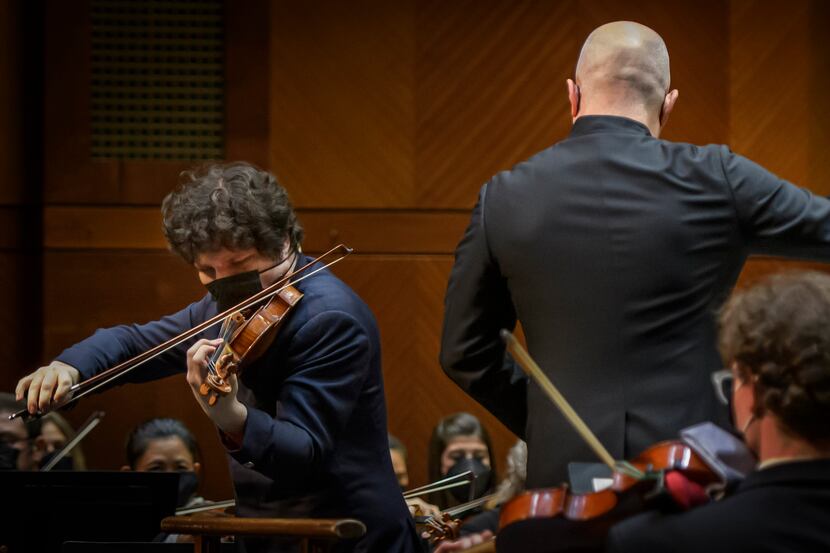The audience at the Fort Worth Symphony Orchestra’s Friday night concert was noticeably larger than usual, thanks in part to all the area students who were bused to Bass Performance Hall. The venue was decked out in holiday decorations, including Christmas trees, poinsettias and wreaths.
Led by guest conductor Carlo Montanaro, the FWSO presented standard fare: Debussy’s Prelude to the Afternoon of a Faun, Mendelssohn’s E minor Violin Concerto and Brahms’ First Symphony. The challenge with such well-trod repertory is playing it in a way that feels fresh, without falsification. At least on Friday, results were mixed.
Violinist Augustin Hadelich is well known in these parts, having appeared with both the Fort Worth and Dallas symphony orchestras in the past.
He took a suitably romantic approach to the Mendelssohn concerto, often pushing ahead or stretching the tempo for dramatic effect. His tone ranged from gritty down low to sweet and searing up high. Virtuosic passagework had purpose and a direction. Yet his vibrato was occasionally overdone for my taste.
The orchestra mainly kept up with Hadelich in the fast movements, though the winds were sometimes out of sync.
As an encore, Hadelich offered American composer Coleridge-Taylor Perkinson’s Louisiana Blues Strut, a fun showpiece evincing jazz and folk influences.
Debussy’s Prelude is one of the most sensuous pieces in the classical repertoire, but in Montanaro’s hands it was generally wan. There were fine moments, like where the winds spun out long lyrical melodies over throbbing figures in the strings.
But the music called for much greater shape and fluidity. Montanaro often just beat time, instead of giving expressive direction. Balances were frequently mismanaged, with secondary ideas burying important lines.
Many of the same issues plagued the Brahms symphony. Tempos corresponded with Brahms’ markings, but already thick textures sounded stodgy. Sections moved from one to the next without a clear sense of connection, and there were some odd tempo changes.
Dynamics regularly were either overly soft or excessively loud. Ugly, slashing accents in the finale felt entirely foreign to Brahms’ music. The inner movements lacked grace and charm.
Accompanimental material again swamped important lines at times, such as in the third movement’s clarinet solo. Trumpets and horns tended to stick out too much from the textures.
Based on this performance, I wonder what the area students now think of Brahms.
Details
Repeats at 7:30 p.m. Dec. 4 and 2 p.m. Dec. 5 at Bass Performance Hall, Fourth and Commerce, Fort Worth. $25 to $99. 817-665-6000, fwsymphony.org.

